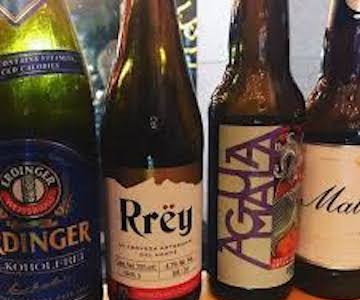If 28 years in beer marketing and sales at Anheuser-Busch—and then, post-merger, Anheuser-Busch InBev NV—taught Gregg Billmeyer anything, it was how to spot a trend. The St. Louis native tracked the initial rise (and brief falloff) of craft beer in the 1990s before the explosion of the late 2000s and 2010s blew a chunk out of the once indomitable market share of such heavyweight brands as Budweiser and Bud Light.
But while the Cult of Craft revolted against the King of Beers and its noble cousin, MillerCoors LLC, capturing nearly a quarter of the overall beer market in 2017, Billmeyer noticed one sector of the brewing establishment holding steady and even gaining ground: labels imported from Mexico.
Three years ago, Billmeyer contacted fellow A-B expat, logistics executive Mike Redohl, and started Quest Beverage. The mission was to introduce ever-more-adventurous American drinkers to the finest craft beers from south of the border.
After enlisting another A-B vet, master brewer Dan Driscoll, and Mexicali, Baja, Mexico-based finance executive Eduardo Muniz, the Quest team met with Mexican brewers and traveled to craft beer festivals in Ensenada and Mexico City, where they applied their experienced palates to picking the best beers. Billmeyer immediately noticed the contrast between the crowded American micro-brew market and the relatively nascent Mexican craft landscape.
“The craft beer scene in Mexico is much like that in the U.S. 20 years ago,” says Billmeyer. “Demand is growing quickly at 60 and 70 percent per year.”
Out of that burgeoning field, Billmeyer and company met extensively with a dozen local brewers to get a sense of production capacity and potential marketability. From there, they winnowed the field down to five finalists, eventually settling on four beers from two brewers to pack and export: Cerveza Urbana, a father-and-sons brewer that fuses American standards with a coastal Mexicali flair (think Pacifico meets Ballast Point), and Cerveza Rrey, a Monterrey-based brewery started by two high-school buddies that focuses on easy drinking versions of Old World traditional styles.

Billmeyer and company were instantly leery of the omnipresent lime-spiked lagers that have not only been well covered by Corona, Modelo, Tecate, and Dos Equis but have been mimicked by craft brewers across the U.S. “We think that people are going to be looking for other types of beer beyond those traditional Mexican lagers,” says Billmeyer.
He hopes they’ll be looking for something like the crisp, dry Kolsch and the bitter, brown England-inspired London from Cerveza Rrey, or the golden Blonde Ale and west-coast Crossover IPA from Cerveza Urbana. Despite the wide range of tastes, all four beers have one thing in common: a sensibility Billmeyer says is shared by most Mexican craft beers at this early stage in the movement—easy drinkability, all below a sessionable 4.7% ABV, except the IPA, which registers only a modest 6.5% ABV. This falls in line with increased consumer interest in lower-alcohol offerings as well.











